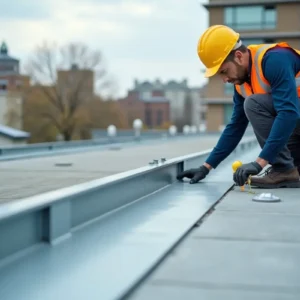Crawl space encapsulation is a good investment for homeowners who want to protect their home’s value. It helps reduce energy bills, prevents mold and mildew, and repels pests like rodents and roaches. It is important to note that this service will alter how air circulates through your home and that regular crawl space inspections are required. However, the benefits are well worth it.
Contents
Improved Energy Efficiency
A crawlspace encapsulation will significantly reduce your energy costs. This is because a large amount of the warm air in your home escapes through the floor joists, the crawl space, and the first floors above it. The vapor barrier prevents the escape of this air, which allows you to save on your utility bills and extend the lifespan of your HVAC systems. Additionally, this will protect your home from mold, fungus, and wood rot that can cause structural damage. It makes your home more attractive to prospective buyers and may qualify you for local or state energy rebates and incentives. This is one project you can quickly recoup the initial cost of in just a few years, especially with skyrocketing energy prices.
Reduced Moisture
Moisture is a common problem in crawl spaces. It can cause wood to rot, which leads to expensive floor repairs. Crawl space encapsulation helps keep moisture out of the crawlspace and improves the air quality of your home. In many cases, encapsulating a crawlspace eliminates the need for mold remediation. If there is an existing problem, however, it will have to be treated before the vapor barrier is installed. The encapsulation process involves sealing vents and air leaks and adding a moisture barrier to the floor joists and foundation walls. Pests like termites, cockroaches, and rodents thrive in damp and dark spaces. By reducing moisture and providing a barrier, crawlspace encapsulation makes your home uninhabitable for these pests. This can save you from many expensive issues that these pests can create.
Better Indoor Air Quality
Moisture problems in crawl spaces often lead to mold, mildew, wood rot, and pest infestations. These issues also affect indoor air quality, which can be a significant health issue for families living in the home. Open crawl spaces can be icy cold in winter and sweltering hot in summer, forcing the HVAC to work harder and drive up energy bills. Encapsulation helps reduce these issues, making your home more energy efficient and cutting utility costs. A finished crawlspace moisture control also increases your home’s value and makes it a more attractive selling point. Encapsulation may qualify you for local and state energy rebates or tax incentives. This means that encapsulation is an affordable option for most homeowners. And with skyrocketing energy costs, it’s also a wise financial decision.
Reduced Pests
Crawl space encapsulation keeps moisture out, which means mold and mildew won’t grow in it. This prevents these spores from infiltrating your living spaces, where they can cause breathing issues and other health problems for your family. Similarly, encapsulation will keep pests, such as rodents and roaches, out of your crawl space. These vermin love to hide in humid, unkempt areas like your crawl space, where they can lay eggs and cause other damage to your home. Additionally, sealing your crawl space can help you save money on your energy bills. This is because a layer of insulation will make your heating and cooling more efficient, reducing utility costs. You may even qualify for rebates from your utility company.
Increased Home Value
If you have plans to sell your home in the future, crawl space encapsulation is an excellent investment. It improves the overall comfort of your house by dealing with issues that lower energy efficiency, cause harmful contaminants to enter your home, and make it difficult to store items in your crawl space. It also improves air quality, preventing mold growth and mildew spores from entering your living spaces. It can prevent moisture from causing damage to your floors and foundation, as well as keep out pests such as termites that would otherwise destroy the structure of your home. Additionally, it allows your heating and cooling equipment to operate more efficiently, lowering your monthly utility bills. You may even qualify for rebates from some utility companies or tax incentives from the federal government.




